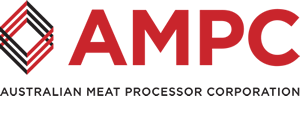The latest Red Meat Processing Sector Environmental Performance Review shows the sector continues to reduce water use and lower emissions, and AMPC is working on refrigeration, solar and other projects which will help future EPR results be even better.
Environmental performance on the right track
The Australian Red Meat Processing Sector’s Environmental Performance Review (EPR) is conducted every five years to track the red meat processing sector’s environmental performance. The 2020 review was jointly funded by the Australian Meat Processor Corporation (AMPC) and Meat and Livestock Australia (MLA).
The 25 processing sites that took part in this year’s review represent 41.3% of total Australian red meat production (3,464,022t HSCW), a significant increase from the 14 sites participating in the 2015 review.
Key results:
Water Use and Wastewater
- Despite the recent challenges of bushfires and drought, the sector achieved an 8% reduction in water use intensity since 2015. Wastewater discharge intensity was reduced by 23.5% since 2015, suggesting improvement in wastewater management.
Energy Use and Greenhouse Gas Emissions
- Emissions intensity has continued to follow a downward trend, reducing by 8% since 2015. This is despite a 10% increase in energy intensity over the same period. The long-term trend is downward for both energy and emissions, despite the energy uptick in the most recent review period. Overall, emissions intensity is down 28% and energy intensity is down 19% since 2010.
- The recent increase in energy intensity may be due to processors incorporating value adding and retail ready production lines, using more on-site chilling and freezing, rather than subcontracting to third party cold chain operators.
- Energy intensity does not reflect the use of different types of energy (including renewable energy). It only measures how much energy from all sources is required per t HSCW. The industry is committed to improving its use of renewable energy as markets for carbon emissions and renewables technologies continue to evolve.
- 60% of emissions are Scope 2 (emissions associated with consumption of grid electricity).
- Volatile energy costs can make it difficult to predict profit margins. Plant owners need reliable energy and water benchmarks, as identifying feasible opportunities to improve performance in these areas is not always straightforward. The AMPC energy & water benchmarking tool has been upgraded to include an emissions intensity calculation as well as additional improvement suggestions.
Waste to Landfill
- Waste to landfill intensity has risen by 5% over the last decade, but a large outlier return in 2020 skewed results for the five-year period to show a 100% increase since 2015. This five-year increase is not expected to be representative, given that EPA waste to landfill requirements have actually tightened during the same period.
- Local amenity complaints around odour and noise remain low at less than 1 odour complaint and 4 noise complaints per site each year.
AMPC initiatives and the future of emissions management:
- Refrigeration is the red meat processing sector’s largest contributor to emissions and utility costs. With synthetic refrigerants being phased down, ongoing volatility in electricity prices, high heating costs, and game-changing improvements in refrigeration & heat recovery technologies, now is the best time for maintenance and engineering managers to be updated on refrigeration energy efficiency opportunities. AMPC is funding a national, year-long series of energy efficiency opportunities workshops for refrigeration.
- A solar PV & storage platform for member access will provide free and transparent assessment, design and pricing for renewable electricity using solar PV, and will commence soon.
- AMPC is participating in RACE for 2030 CRC – this is Australia’s largest ever CRC and will provide energy productivity R&D opportunities for members to participate in.
- A Victorian AMPC member is showing national leadership in committing to the largest privately owned solar PV & storage array in Australia.
- The red meat processing sector is aligning with the Australian Beef & Sheep Sustainability Frameworks.
- There are around a dozen AMPC members who are rolling out granular services monitoring projects on site, as part of AMPC-funded ‘Plant Initiated Projects’, which will improve future insights for improved management of energy and water use.



